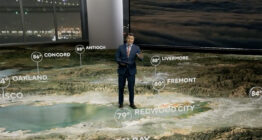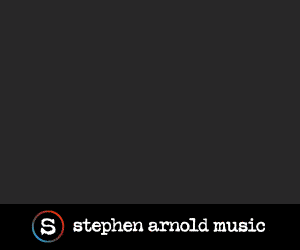Zero Density’s Baris Zavaroglu sees virtual moving beyond niche as broadcasters face new pressure

Subscribe to NCS for the latest news, project case studies and product announcements in broadcast technology, creative design and engineering delivered to your inbox.
Less than six months into his role as CEO of Zero Density, Baris Zavaroglu is witnessing what he describes as a fundamental shift in how broadcasters approach visual storytelling. The executive, who brings more than 20 years of experience from companies including HBO Max, Fox, and Disney, noted traditional broadcasters are under increasing pressure to compete not just with each other, but with streaming platforms, digital content, and even gaming experiences.
 “Traditional media is transforming to streaming and OTT, and at the same time, the entire broadcasting ecosystem is in change,” Zavaroglu said during a recent interview with NCS. “Audiences expect a lot of different capabilities, including interactivity, mobility and visual richness, and broadcasters need to deliver all these requests while doing more with less and fewer resources.”
“Traditional media is transforming to streaming and OTT, and at the same time, the entire broadcasting ecosystem is in change,” Zavaroglu said during a recent interview with NCS. “Audiences expect a lot of different capabilities, including interactivity, mobility and visual richness, and broadcasters need to deliver all these requests while doing more with less and fewer resources.”
Zero Density specializes in real-time graphics and virtual production solutions built on Epic Games’ Unreal Engine.
The company’s technology allows broadcasters to create photorealistic virtual environments and data-driven graphics in real-time, supporting everything from news and sports coverage to entertainment programming.
The technology, for example, has rolled out to most of the CBS-owned television stations in the United States, helping the broadcaster present weather and news in new visual ways. It has also been used at the network level, for programming around major events along with a daily whip-around news program on CBS News 24/7.
From niche to necessity
Zavaroglu argued in the interview that virtual production has evolved from a specialty tool to an essential capability.
“Virtual production is no longer a niche,” he said. “You can find so many different virtual production software and solutions. But the thing is, Unreal Engine has been a game changer in this business, as well as how you use it in your solution.”
The shift reflects broader changes in audience expectations. Viewers who consume content across multiple platforms now expect more sophisticated visuals from traditional broadcasters, creating what Zavaroglu describes as a competitive landscape far beyond television.
“The competition is not only among traditional broadcasters. The competition is with streaming, with digital, with gaming,” he explained. “You have to enrich the viewing experience, otherwise it’s very tough. You cannot be successful.”
This competitive pressure coincides with economic challenges facing traditional broadcasters.
As advertising revenue increasingly shifts to digital platforms, television networks are being forced to reduce costs while simultaneously improving their visual offerings. Zero Density positions itself as addressing both needs by providing sophisticated graphics capabilities that can replace more expensive traditional studio setups.
“Broadcasters are really under pressure to do more with less, and we acknowledge and understand that,” Zavaroglu said. “Our role at Zero Density is to help them elevate their production quality and capability while reducing complexity and cost.”
Balancing technology with human needs
While virtual studios offer cost savings and creative flexibility, Zavaroglu acknowledges they present challenges for on-air talent. He noted that presenters often feel more comfortable in traditional studio environments, making it important for virtual production tools to provide similar comfort levels.
“For a presenter in television, to present in the real studio makes them feel much more comfortable,” he said.
“While virtual production solutions will never be able to deliver that exact same feeling, there are always steps you can take to help make moving around the studio as comfortable as possible. For instance, you could position a monitor close to the green screen so they can see where they stand in the virtual world and mask it with our solutions, so that you can try to give them more awareness and control.”
The company’s approach emphasizes simplification despite the underlying technical complexity. Zero Density’s solutions are designed to be accessible to operators without extensive technical training, with Zavaroglu citing client feedback on how the system is “very simple to use.”
AI integration and market expansion
Looking ahead, Zero Density is incorporating artificial intelligence into its roadmap, focusing on automation and AI-driven content adaptation. The company is also expanding its motion graphics tools to reduce creative barriers while maintaining the Unreal Engine foundation that Zavaroglu sees as its key differentiator.
“All our solutions are using Unreal Engine,” he said. “How we are using it with our compositing and control platforms is the difference. Our vision is to deliver all solutions by using the most advanced technology, and make them easy-to-use and future-proof.”
While Zero Density has established itself in virtual studio, extended reality and augmented reality applications, the company is now focusing heavily on on-air graphics.
This represents an attempt to lead what Zavaroglu calls “the global on-air graphic market” by combining Unreal Engine’s performance capabilities with motion graphics creativity.
The expansion comes as Zero Density serves clients beyond traditional broadcasting, including streaming platforms, e-sports organizations, live events and corporate communications. This diversification reflects Zavaroglu’s view that virtual production applications extend wherever visual content is created.
Despite the growth of streaming and digital platforms, Zavaroglu maintains that traditional broadcasting will persist, particularly for live content.
“Some people think that traditional media is dying. I don’t think so,” he said. “Live TV, including news, sports, weather, or live shows will always be there. It’s just changing.”
His perspective positions Zero Density at what he describes as the center of this transformation, helping traditional broadcasters adapt to new audience expectations while competing across an expanded media landscape. The next phase of broadcasting, according to Zavaroglu, “will be faster, more visual, and more immersive.”
Subscribe to NCS for the latest news, project case studies and product announcements in broadcast technology, creative design and engineering delivered to your inbox.





tags
AI, Artificial Intelligence, Baris Zavaroglu, Virtual Production, Zero Density
categories
Augmented Reality, Virtual Production and Virtual Sets, Featured, Graphics